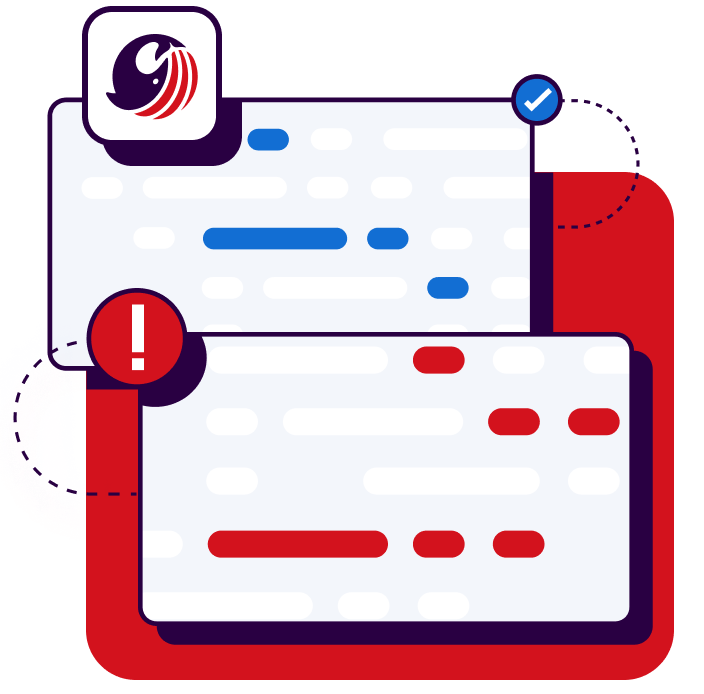Start your free trial
Verify all code. Find and fix issues faster with SonarQube.
Get startedTRUSTED BY 7M+ DEVELOPERS & 400K+ ORGANIZATIONS
Code quality: A developer's guide
Code quality is a practical measure of a software's effectiveness. It answers the questions: Is the code readable? Can it be maintained? Is it reliable and secure? High-quality code is easy to understand, modify, and debug.
Low-quality code creates tangible problems. It leads to bugs, security vulnerabilities, and mounting technical debt. This translates to more time spent debugging and less time solving interesting challenges.
High-quality code improves maintainability, performance, and reliability, making it easier for developers to add new features, fix issues, and collaborate effectively.
Why code quality is important
- Reduces bugs and risk: Writing high-quality code reduces logical flaws and errors. This means less time wasted on troubleshooting and a more reliable product.
- Improves maintainability: Clear, readable code is easier for any developer (including your future self) to understand, modify, and extend with new features.
- Boosts performance: Optimized, well-structured code performs more efficiently. This helps avoid performance bottlenecks and scalability problems as the software grows.
- Enhances reliability: Quality code properly manages exceptions and errors, making the software more robust and less susceptible to crashes or data corruption.
How to improve code quality
Improving code quality is a continuous process built on consistent standards, habits, and tools. Key methods include testing, code reviews, and pipeline integration.
Testing
Use unit, integration, and other automated testing methods to verify code accuracy and function. Adopting test-driven development (TDD), where tests are written before the code, helps ensure you meet requirements and catch issues early.
Code reviews
Code reviews are essential for assessing the codebase.
- Peer reviews: Manual reviews by teammates allow for collaborative feedback, knowledge sharing, and spotting potential logic issues.
- Automated reviews: These reviews use static code analysis tools to scan the codebase for syntax errors, code smells, performance bottlenecks, and security vulnerabilities. This automates the process of finding and fixing issues that contribute to technical debt.
CI/CD integration
Integrate automated checks into your continuous integration/continuous delivery (CI/CD) pipeline. By automating the build, testing, and deployment steps, you ensure that code changes are validated before being merged into the main codebase. This reduces the risk of regressions and creates a more consistent delivery process.
How Sonar improves code quality
Sonar provides the tools to build code quality and security into your team's workflow, helping you deliver high-quality code consistently.
- In the IDE: SonarQube for IDE acts as a real-time coach, providing on-the-fly feedback and quick fixes as you write code. This helps you find and fix issues immediately, right in your editor.
- In the pipeline: SonarQube Server (a self-managed, on-prem solution) and SonarQube Cloud (our SaaS solution) integrate directly into your CI/CD pipeline. They perform deep static analysis and use Quality Gates to ensure only code that meets your standards can be merged and released to production.
